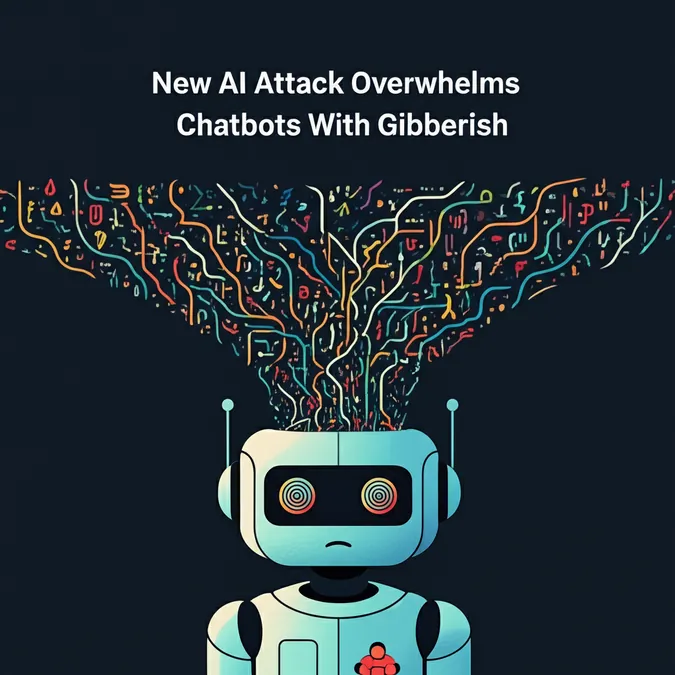Developer Offer
Try ImaginePro API with 50 Free Credits
Build and ship AI-powered visuals with Midjourney, Flux, and more — free credits refresh every month.
How AI Is Driving Marketing ROI and Stock Growth
The marketing industry is experiencing a seismic shift, with AI-driven content tools dismantling traditional workflows and redefining what's possible for return on investment (ROI). Companies like Semrush and OpenAI's ChatGPT are leading this transformation, using artificial intelligence to slash costs, unlock creativity at scale, and optimize customer engagement. Here’s a deep dive into how these innovations are reshaping the marketing landscape and why investors should be paying close attention.

The New Era of AI Driven Marketing Efficiency
Traditional marketing has always been a labor-intensive field, relying on teams of copywriters, SEO specialists, and social media managers. Now, AI tools like ChatGPT and Semrush's AI Optimization (AIO) suite are changing the game, allowing businesses to produce high-quality content in a fraction of the time and for a fraction of the cost.
The numbers speak for themselves:
- Cost Reduction: Major brands like Nike and Coca-Cola have reported content creation costs dropping by as much as 40% with the help of AI tools.
- Engagement Gains: AI-generated personalized social media posts have led to a 160% surge in engagement for some companies, with Qualcomm saving 2,400 hours of work monthly.
- SEO Efficiency: Semrush’s AIO tools are proven to reduce technical SEO mistakes by 90%, helping businesses boost their organic traffic by an average of 45%.
This trend is fueling a massive market expansion. The AI content market, valued at $2.3 billion in 2024, is forecast to grow at a 16.6% CAGR to hit $19.8 billion by 2029. This isn't just a technological shift; it's an ROI revolution.
Semrush A Case Study in AI Adaptation
Semrush (SEMR) is a textbook example of a company that is successfully riding the AI wave. Its impressive 2024 financials, including $376.82 million in revenue (a 22.5% year-over-year increase) and $8.24 million in net income (a massive 767% jump), highlight its transition from a niche SEO tool to a comprehensive marketing platform.
Key growth drivers include:
- Enterprise Focus: Semrush saw an 86% YoY growth in clients paying over $50,000 annually, adding $9M in annual recurring revenue (ARR).
- AI Integration: The AIO suite, launched in 2024, quickly generated $4M in ARR, proving its value to brands navigating AI-driven search.
- Strategic Acquisitions: The 2024 purchase of Third Door Media expanded its analytics capabilities and digital media footprint.
However, investing in Semrush is not without its challenges. The stock has shown significant volatility, including a 46% slump in early 2025, and insider selling has raised some investor concerns. Analysts also point to profitability pressures and dilution risks. Despite this, May 2025 estimates suggest Semrush's intrinsic value is 65% above its current price, pointing to a potential Buy rating for investors who can tolerate the risk.
Microsoft and ChatGPT Powering the AI Cloud
While ChatGPT itself isn't a public company, its market impact is most visible through its key partner, Microsoft (MSFT). Microsoft's Azure cloud platform powers OpenAI's demanding infrastructure, and the results are stunning. In 2024, Microsoft’s AI revenue run rate hit $13 billion, a 175% YoY increase, with Azure's 35% growth easily outpacing its competitors.
Why Microsoft is a dominant force:
- OpenAI Partnership: AI workloads now account for a 16% contribution to Azure's revenue, up from 10% in 2023.
- Copilot Ecosystem: Integrated tools like Microsoft 365 Copilot have boosted commercial revenue by 12% YoY, proving AI's power to enhance productivity.
- Massive Infrastructure Investment: The company has committed $80 billion through 2025 to build out data centers and develop custom AI chips.
Potential risks include Microsoft's high valuation and increasing regulatory scrutiny, with 29 countries now imposing AI regulations. Nonetheless, the company's leadership in AI positions it to potentially reach $50 billion in AI revenue by 2027, justifying a Hold to Buy rating. It remains a core holding for any tech-focused portfolio.
Navigating the Risks in AI Investment
While the AI content wave is powerful, several risks remain on the horizon:
- AI “Hallucinations”: Inaccurate or nonsensical generative content can cause significant damage to a brand's reputation.
- Regulatory Hurdles: As governments tighten their grip on AI governance, compliance costs are likely to rise.
- Fierce Competition: Powerful alternatives like Google's Gemini and Alibaba's Qwen pose a direct threat to more specialized platforms like Semrush.
- Valuation Concerns: High price-to-earnings ratios and massive market caps for companies like Microsoft may limit near-term upside.
Final Takeaway Investing in the AI Content Stack
For investors looking to capitalize on the AI content revolution, there are two distinct opportunities:
- Semrush (SEMR): A high-risk, high-reward play on a company successfully pivoting to enterprise AI. A price target of $16.50 (39% upside) seems plausible, but investors must monitor execution closely.
- Microsoft (MSFT): A safer, growth-oriented investment in the dominant cloud provider for the AI era. A $500 price target (15% upside from July 2025) is a reasonable expectation given its scale.
The market will ultimately favor companies that master the hybrid model—blending AI's incredible scalability with essential human oversight. The AI train is certainly leaving the station; now is the time to decide how to get on board. As with any investment analysis, it is crucial to conduct your own research before making financial decisions.
Compare Plans & Pricing
Find the plan that matches your workload and unlock full access to ImaginePro.
| Plan | Price | Highlights |
|---|---|---|
| Standard | $8 / month |
|
| Premium | $20 / month |
|
Need custom terms? Talk to us to tailor credits, rate limits, or deployment options.
View All Pricing Details

